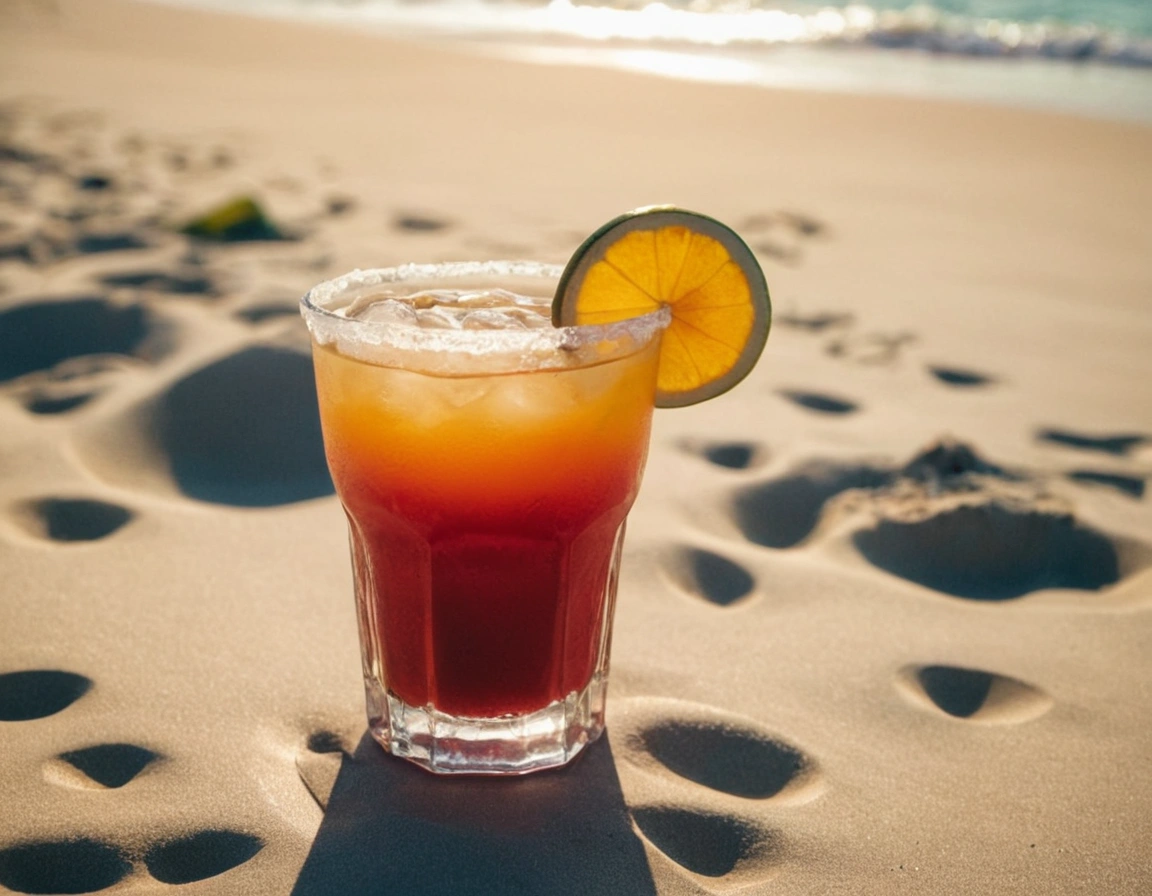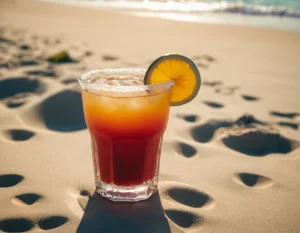If you were a kid in the 90s or early 2000s, you likely remember Bug Juice, that vividly colorful and sugary drink that made its way into lunchboxes and summer camp coolers. But, just as quickly as it rose to fame, Bug Juice seemed to vanish from store shelves. What led to the disappearance of this once-popular beverage? In this article, we’ll dive into the history of Bug Juice, explore the reasons behind its ban, and look at its lasting impact on pop culture.
The Rise of Bug Juice
Origins and Development
Bug Juice made its debut in the mid-90s, courtesy of Becton, Dickinson and Company, a company more commonly known for medical supplies. Under its food division, Bug Juice was introduced as a fun, vibrant drink aimed at kids. The beverage quickly gained traction due to its eye-catching packaging featuring cartoon bugs and its irresistibly sweet flavor. With its affordable price and playful branding, Bug Juice became a staple for parents looking for a treat to toss into their children’s lunchboxes.
For a more in-depth look at popular 90s snacks, you can read about it in this nostalgic article on Delish.
Marketing Success
The success of Bug Juice wasn’t just about its taste and look—it was also about clever marketing. Advertisements showcased the drink as an essential part of summer fun, especially at camps. Its presence in popular media and its association with carefree summer days made it a hit among children and their parents alike.
Why Was Bug Juice Banned?
Despite its initial success, Bug Juice began to fade from popularity by the early 2000s. The reasons for its decline are multifaceted, ranging from changing health trends to increased competition in the beverage market.
Changing Health Trends
Increased Awareness of Sugar Content
As the new millennium progressed, the focus on health and wellness became more pronounced. Parents and health experts grew increasingly concerned about the high sugar content in children’s drinks. Bug Juice, with its hefty sugar load and artificial ingredients, fell out of favor as people began to seek out healthier options. This shift in consumer preference contributed significantly to the decline in Bug Juice’s popularity.
Regulatory Changes
During the same period, regulatory bodies started to impose stricter rules on the marketing of sugary drinks to children. Health organizations began pushing for reductions in sugar consumption among kids, which put products like Bug Juice under scrutiny. The backlash against sugary beverages became stronger, further leading to the removal of Bug Juice from store shelves.
For more insights into how health trends influence the beverage industry, check out this article from Beverage Daily.
Competition and Market Changes
Emergence of Healthier Alternatives
As the demand for healthier options surged, new products entered the market with promises of lower sugar content, organic ingredients, and added nutritional benefits. Bug Juice struggled to compete against these new entrants, which catered to the evolving tastes and health-conscious preferences of consumers. Brands focusing on natural ingredients and reduced sugar quickly overshadowed Bug Juice.
Market Competition
The beverage industry became increasingly competitive, with numerous companies vying for consumer attention. Bug Juice’s inability to keep up with market trends and its failure to adapt to new consumer demands contributed to its decline.
The Role of Ingredients
Controversial Ingredients in Bug Juice
One of the main reasons for Bug Juice’s decline was its controversial ingredient list. The drink was packed with high-fructose corn syrup, artificial colors, and flavors—components that were increasingly criticized for their negative health effects. As consumers became more aware of these issues, they began avoiding products with such ingredients.
Consumer and Media Backlash
Public Perception
The public’s perception of sugary drinks began to shift dramatically, influenced by media reports and health campaigns. Bug Juice faced criticism for its high sugar content and artificial additives. This negative media coverage and the growing awareness of healthier alternatives led to a decline in consumer interest and, eventually, to its removal from the market.
The Discontinuation of Bug Juice
Timeline of Events
Bug Juice enjoyed a robust presence throughout the 90s, but by the mid-2000s, its sales began to plummet. The exact reasons for the official discontinuation remain somewhat unclear, as there was no formal announcement or detailed explanation from the company. The combination of changing health trends, increased competition, and regulatory pressures likely contributed to its quiet withdrawal from the market.
Attempts to Revive Bug Juice
There were sporadic attempts to revive Bug Juice in various forms, but none managed to recapture the original’s success. Small-scale releases or similar products appeared briefly but failed to regain the same level of popularity. The evolving consumer landscape, with its emphasis on healthier options, made it challenging for such a sugary product to succeed again.
Legacy and Cultural Impact
Nostalgia for Bug Juice
Influence on Pop Culture
Even though Bug Juice is no longer available, it remains a nostalgic symbol for those who grew up in the 90s. The drink became synonymous with summer camps and carefree childhood days. Its influence is still felt today, with many reminiscing about the joy it brought to their childhoods.
For a nostalgic look back at the Disney Channel’s Bug Juice series, visit this feature on D23.
The Bug Juice Legacy
Remnants of the Brand
The legacy of Bug Juice continues in the form of similar products and the enduring fondness people have for it. Its influence can be seen in other beverages that aim to capture the fun and vibrancy of the original. While Bug Juice itself may no longer be on shelves, its impact on summer camp culture and 90s nostalgia remains significant.
DIY Bug Juice-Inspired Recipe
For those who miss the taste of Bug Juice, here’s a simple recipe to recreate a nostalgic treat with a healthier twist.
Ingredients for the DIY Recipe
- 1 cup mixed berry juice (preferably 100% juice)
- 1/2 cup lemon-lime soda (or sparkling water for a lower-sugar version)
- 1 tbsp honey or agave syrup (optional, for added sweetness)
- 1/4 cup fresh fruit (such as strawberries, raspberries, or blueberries)
- Ice cubes
Instructions for Preparation
- Mix the Juice and Soda: In a large pitcher, combine the mixed berry juice with the lemon-lime soda or sparkling water. Stir well to combine.
- Sweeten If Needed: Taste the mixture and add honey or agave syrup if you prefer a sweeter drink. Stir until the sweetener is fully dissolved.
- Add Fresh Fruit: Add the fresh fruit to the pitcher and stir gently to combine.
- Serve Over Ice: Fill glasses with ice cubes and pour the Bug Juice-inspired drink over the ice. Serve immediately and enjoy!
Tips for the Perfect Bug Juice-Inspired Drink
- Use 100% Juice: Opt for juices that are 100% fruit juice with no added sugars or artificial flavors.
- Customize the Fruit: Feel free to mix and match different fruits based on your preference.
- Chill the Glasses: For an extra refreshing drink, chill the glasses in the freezer before serving.
For more homemade drink recipes, check out this guide on Bon Appétit.
drinks
- Celestial Fog Recipe
- Strawberry Basil Lemonade Recipe
- Frothy Purple Drink
- Jalbitedrink recipe
- Why Was Bug Juice Discontinued
- Pink coconut drink
- Bug juice recipe
- Bug juice
Conclusion: The Enduring Appeal of Bug Juice
Bug Juice may no longer be available, but its legacy lives on in the hearts of those who enjoyed it during their childhood. The drink was a symbol of fun, summer camp adventures, and the carefree days of the 90s. While it faced challenges due to changing consumer preferences and increased competition, its place in pop culture remains secure. For those who long for a taste of the past, a homemade version can offer a delightful trip down memory lane.
FAQs
Q: Why was Bug Juice banned?
A: Bug Juice was discontinued due to changing health trends, increased competition from healthier beverages, and regulatory pressures on marketing sugary drinks to children.
Q: What were the main ingredients in Bug Juice?
A: Bug Juice was a sugary fruit-flavored drink primarily made from high-fructose corn syrup, artificial flavors, and colorings.
Q: When was Bug Juice officially discontinued?
A: Bug Juice was officially discontinued in the mid-2000s, following a decline in sales and changing market conditions.
Q: Has Bug Juice ever made a comeback?
A: There were attempts to revive Bug Juice, but none succeeded in recapturing its original popularity. The market’s shift towards healthier options made it difficult for such a sugary product to thrive again.


